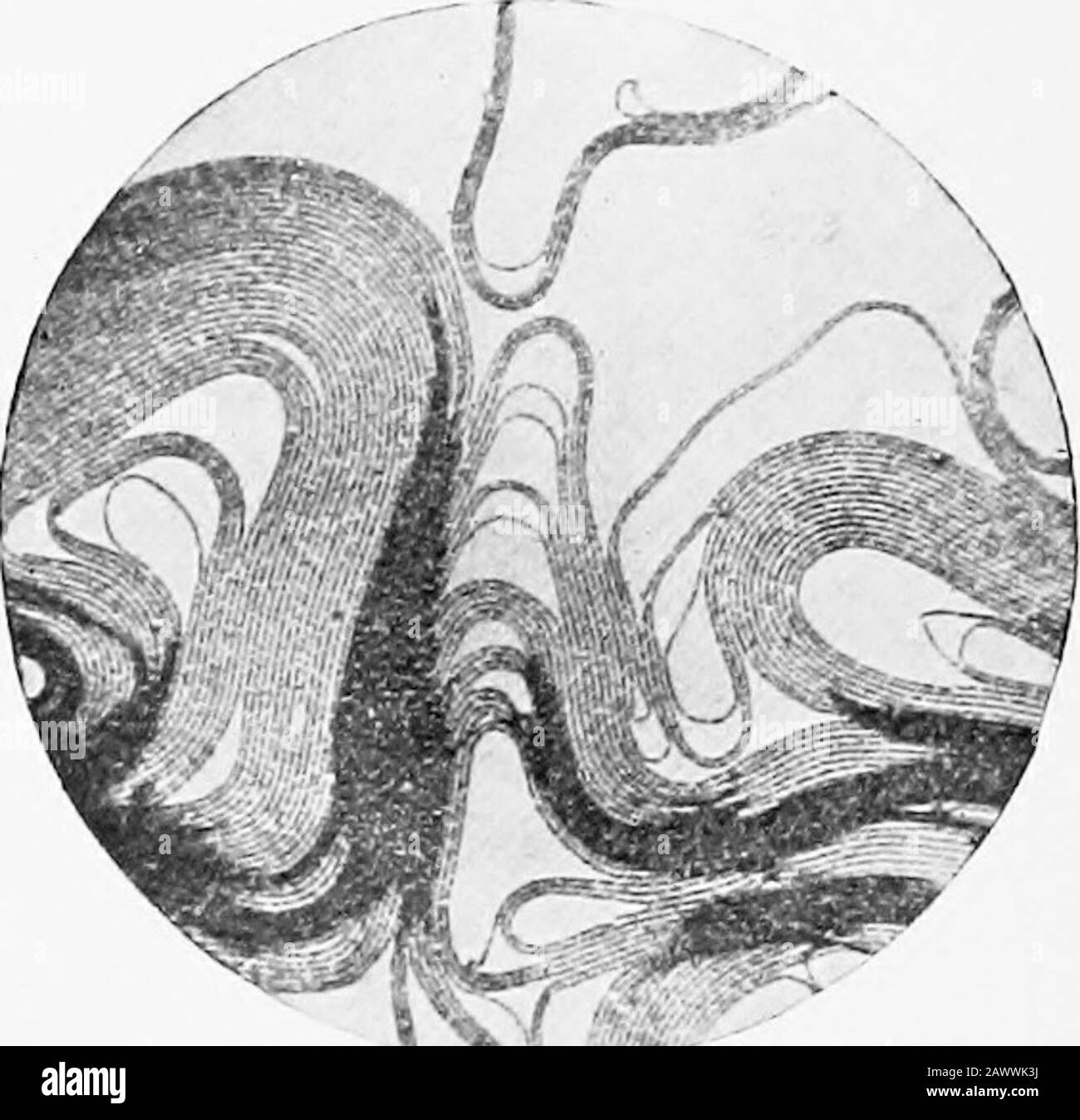Essentials of bacteriology; being a concise and systematic introduction to the study of bacteria and allied microörganisms . Fig. 42.- -Bacillus anthracis, stained to show the spores (X 1000)(Frankel and Pteiffer). Form.—Rods of variable length, largest of pathogenic or-ganisms 4 At to 10 /i in length, nearly the size of a human blood-corpuscle; broad, cup-shaped ends; in bouillon cultureslong threads are formed, with large oval spores (Figs. 42, 43). Spores.—Single, large, very resistant. Dry heat, 140° C,in three hours; steam in five minutes; necessary to kill. Do io6 ESSENTIALS OF BACTEEIO

Image details
Contributor:
The Reading Room / Alamy Stock PhotoImage ID:
2AWWK3JFile size:
7.1 MB (280.8 KB Compressed download)Releases:
Model - no | Property - noDo I need a release?Dimensions:
1606 x 1555 px | 27.2 x 26.3 cm | 10.7 x 10.4 inches | 150dpiMore information:
This image is a public domain image, which means either that copyright has expired in the image or the copyright holder has waived their copyright. Alamy charges you a fee for access to the high resolution copy of the image.
This image could have imperfections as it’s either historical or reportage.
Essentials of bacteriology; being a concise and systematic introduction to the study of bacteria and allied microörganisms . Fig. 42.- -Bacillus anthracis, stained to show the spores (X 1000)(Frankel and Pteiffer). Form.—Rods of variable length, largest of pathogenic or-ganisms 4 At to 10 /i in length, nearly the size of a human blood-corpuscle; broad, cup-shaped ends; in bouillon cultureslong threads are formed, with large oval spores (Figs. 42, 43). Spores.—Single, large, very resistant. Dry heat, 140° C, in three hours; steam in five minutes; necessary to kill. Do io6 ESSENTIALS OF BACTEEIOLOGY not occur in the circulating blood, but develop after death orin artificial media at 30° C. / I Fig. 43.—Anthrax bacilli in human blood (fuchsin staining) (Zeiss one-twelfth oil-immersion; No. 4 ocular) (taken from Vierordt).. Fig. 44.—Bacillus anthracis, impression preparation, edge of colonyZettnow prep. (Kolle and Wassermann). Liquefies gelatin; immotile. Growth.—Grows, rapidly, between 12° C. and 45° C, and BACILLUS OF ANTHRAX 107 requires plenty of oxygen, but may be classed as a facultativeanaerobe; grows weU in aU media. Colonies develop in two days; white shiny spots, whichappear under microscope as slightly yellowish, granular, twisted balls, Uke a ball of yam; each separate string or hair, iflooked at imder high power, being composed of bacteria inthreads. (See Fig. 44.) -^=^.i